12 Commonly Used Components on PCBs for Beginners
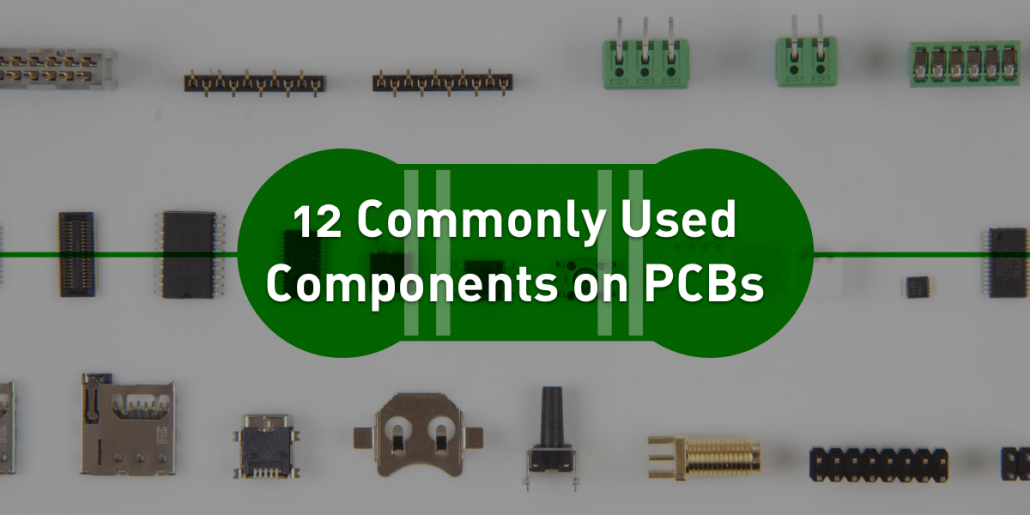
Despite living in a world full of electronics gadgets, electronics still retains a veil of mystery. The workings mechanisms of electronic projects seem so abstract, as nothing can be seen working away to make gadgets work. Without moving gears, shafts and the like, nothing is visually happening on the printed circuit board. You cannot see current flowing, only the results from it. As such, taking up electronics making as a hobby seems like a daunting feat for many would-be electronics project makers. Building something without the complete understanding of the theory behind it seems unthinkable.
But in reality, it is possible to build projects with little understanding of the theory behind it. While knowledge of electronics theory will prove itself to be more than helpful, it is not an essential part of building simple yet useful projects. A good way to get started is to first familiarize with the components used on a circuit board and their functions.
A Printed Circuit Board – A city that never sleeps

Similar to how cities work, the components on a PCB work together to form a complete system to power our devices. Once you think along these lines, the notion of having so many different components on a PCB will no longer seem too foreign an idea. To help you get started, we will introduce 15 commonly used electronic components mounted on Printed Circuit Boards!
1. Resistors
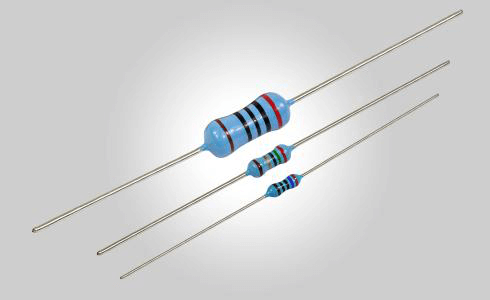
Resistors are one of the most commonly used components in PCBs and are probably the simplest to understand. Their function is to resist the flow of current by dissipating electric power as heat. They come in a multitude of different types made of a range of different materials but the classic resistor most familiar to the hobbyist is the ‘axial’ style resistors with leads on both long ends and the body inscribed with colored rings. These rings are a code that indicates their resistance value. If you are unsure of how to do so, check out our article on deciphering resistor color codes!
2. Capacitors
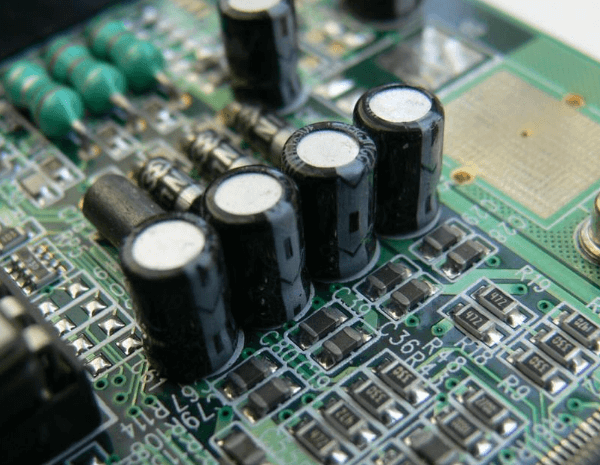
Capacitors are the next most common component you will find on a PCB, and are usually outnumbered only by resistors. The function of capacitors is to temporarily hold electric charge, and release it whenever more power is needed elsewhere in the circuit. Typically, it does this by collecting opposite charges on two conductive layers separated by an insulating, or dielectric, material. Capacitors are often categorized according to the conductor or dielectric material, which gives rise to many types with varying characteristics from high capacitance electrolytic capacitors, diverse polymer capacitors to the more stable ceramic disc capacitors. Some have appearances similar to axial resistors, but the classic capacitor is a radial style with the two leads protruding from the same end.
3. Inductors
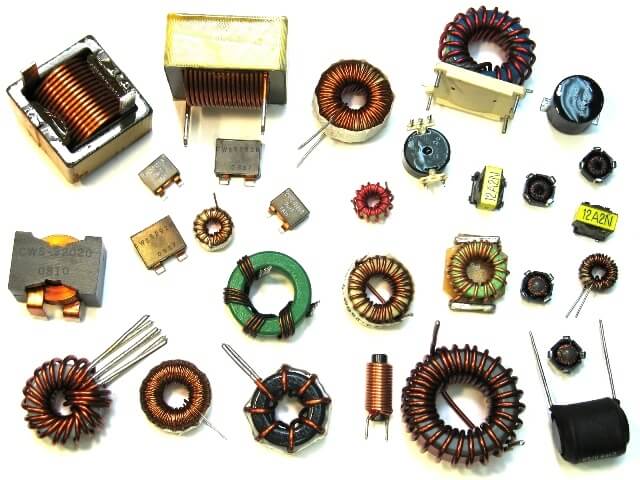
(source: eeweb)
Inductors are the last in the family of linear passive components, along with resistors and capacitors. Like capacitors, they also store energy but instead of storing electrostatic energy, inductors store energy in the form of a magnetic field that generates when current flows through them. The simplest inductor is a coil of wire. The greater the number of windings, the greater the magnetic field and therefore inductance. You may find them wrapped around a magnetic core that comes in a variety of shapes. This serves to amplify the magnetic field substantially and therefore, the stored energy. Inductors are often used to filter out or block certain signals, for example, blocking interference in radio equipment or used in conjunction with capacitors to manipulate AC signals in switched mode power supplies.
4. Potentiometers
Potentiometers are a form of variable resistor. They are commonly available in rotary and linear types. By rotating the knob of a rotary potentiometer, resistance is varied as the slider contact is moved over a semi-circular resistor. A classic example of rotary potentiometers is the volume controller on radios where the rotary potentiometer controls the amount of current to the amplifier. The linear potentiometer is the same, except that resistance is varied by moving the slider contact on the resistor linearly. They are great when fine tuning is required in the field.
5. Transformers
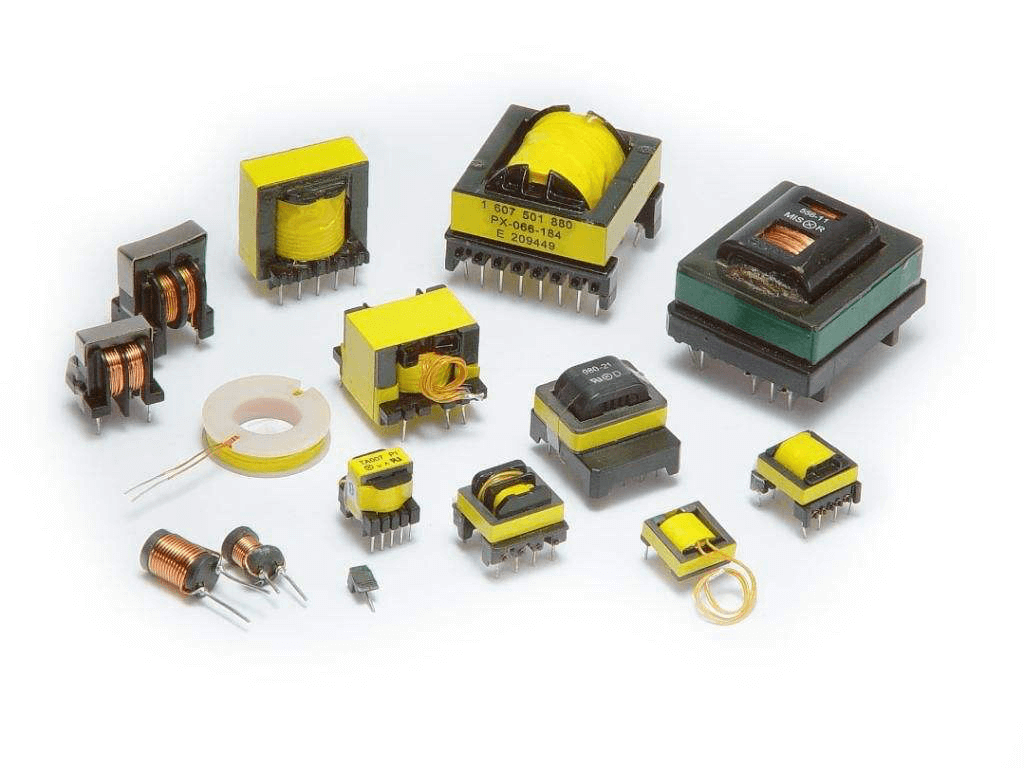
The function of transformers is to transfer electrical energy from one circuit to another, with an increase or decrease in voltage. You can say the voltage is being ‘transformed’. Similar to inductors, they consist of a soft iron core with at least two coils of wire wound around it – the primary coil, for the first, or source circuit, and the secondary coil for the circuit where energy is being transferred to. You may have seen large industrial transformers on telegraph poles; these step-down the voltage from overhead transmission lines, typically several hundred thousand volts, to the few hundred volts typically required for household use.
6. Diodes

Much like a one-way street, a diode is a device that allows current to flow in one direction only, from the anode (+) to the cathode (-). It does this by having zero resistance in one direction and high resistance via the other direction. This feature can be used to block current from flowing in the wrong direction, which could cause damage. The most popular diode with hobbyists is the light-emitting diode or LED. As the first part of the name suggests, they are used to emit light, but anyone who has tried to solder one knows, it is a diode, so it is important to get the orientation correct, otherwise, the LED won’t light up.
7. Transistors
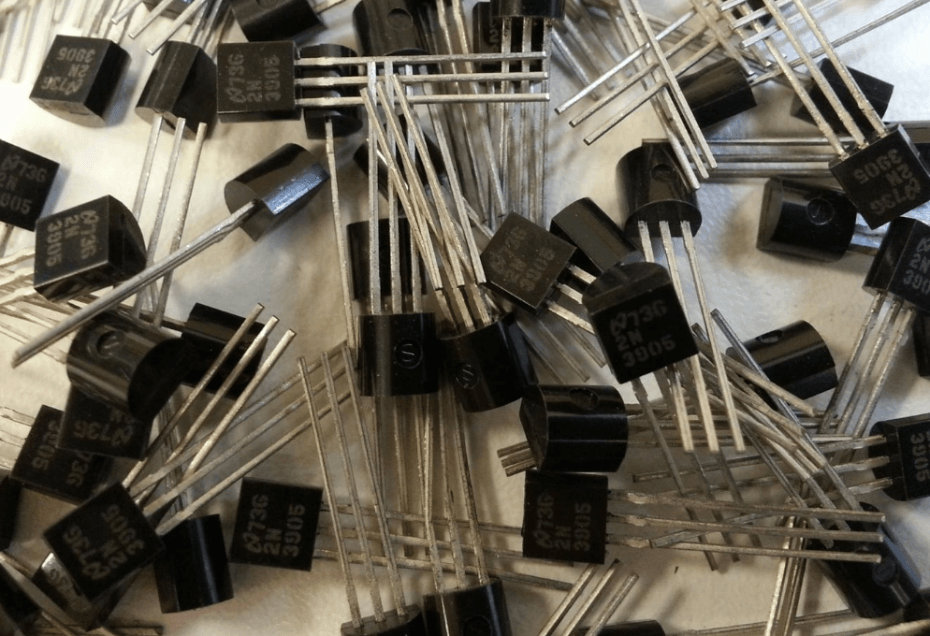
Transistors are considered the fundamental building blocks of modern electronics. Several billions may be found in a single IC chip. But transistors are simply amplifiers and electronic switches. They come in several types, with the bipolar transistor as the most common type. They can be further categorized into NPN and PNP versions. Bipolar transistors have 3 pins – the base, collector and emitter. For an NPN type, when a current (usually a small current) flows through from the base to the emitter, then it turns on another circuit that causes current (usually much larger) to flow from the collector to the emitter. In a PNP transistor, the directions are reversed. Another type of transistor, called Field effect transistors, or FETs, use an electric field to activate the other circuit.
8. Silicon-Controlled Rectifier (SCR)
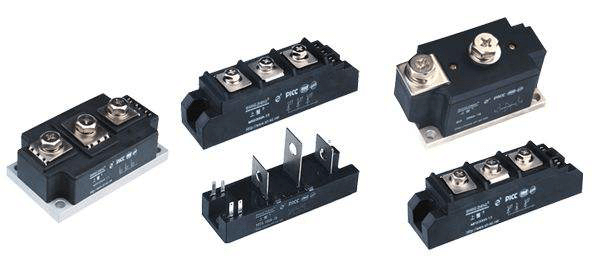
Also known as thyristors, Silicon Controlled Rectifiers (SCR) are similar to transistors and diodes – in fact, they are essentially two transistors working together. They also have three leads but consist of four silicon layers instead of three and only function as switches, not amplifiers. Another important difference is that only a single pulse is required to activate the switch, whereas current has to be applied continuously in the case of a single transistor. They are more suited to switching larger amounts of power.
9. Integrated Circuits
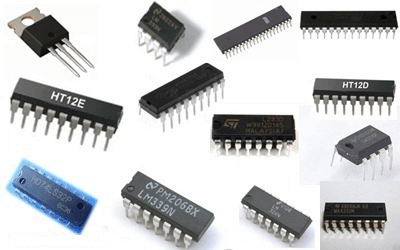
ICs, or integrated circuits are exactly that, they are circuits and components that have been shrunk down onto wafers of semiconductor material. The sheer number of components that can be fit onto a single chip is what gave rise to the first calculators and now powerful computers from smartphones to supercomputers. They are usually the brains of a wider circuit. The circuit is typically encased in a black plastic housing which can come in all shapes and sizes and have visible contacts, whether they are leads extending out from the body, or contact pads directly under like BGA chips for example.
10. Crystal Oscillators
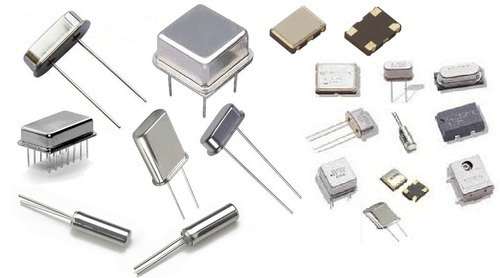
Crystal oscillators provide the clock in many circuits that require precise and stable timing elements. They produce a periodic electronic signal by physically causing a piezoelectric material, the crystal, to oscillate, hence the name. Each crystal oscillator is designed to vibrate at a specific frequency and are more stable, economical and have a small form factor compared to other timing methods. For this reason, they are commonly used as precise timers for microcontrollers or more commonly, in quartz wristwatches.
11. Switches and Relays
A basic and easily overlooked component, the switch is simply a power button to control the current flow in the circuit, by switching between an open or a closed circuit. They vary quite a bit in physical appearance, ranging from slider, rotary, push button, lever, toggle, key switches and the list goes on. Similarly, a relay is an electromagnetic switch operated via a solenoid, which becomes like a sort of temporary magnet when current flows through it. They function as switches and can also amplify small currents to larger currents.
12. Sensors
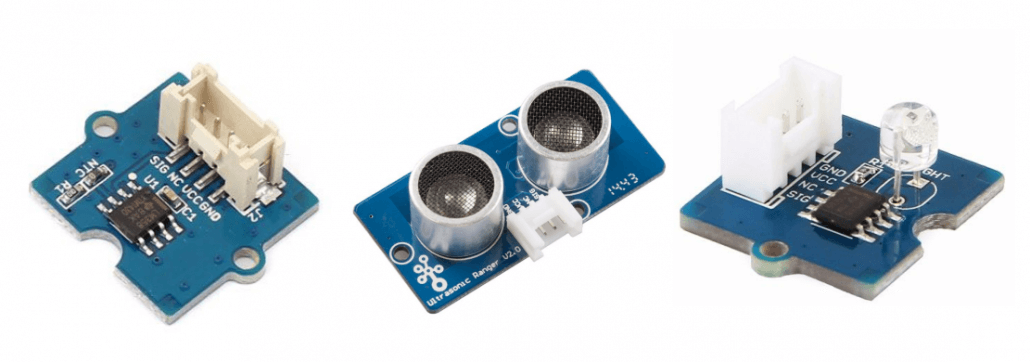
Sensors are devices whose function is to detect changes in environmental conditions and generate an electrical signal corresponding to that change, which is sent to other electronic components in the circuit. Sensors convert energy from a physical phenomenon into electrical energy, and so they are in effect, transducers (convert energy in one form into another). They can be anything from a type of resistor in a resistance temperature detector (RTD), to LEDs detecting in-fared signals, such as in a television remote. A wide variety of sensors exist for various environmental stimuli for example humidity, light, air quality, touch, sound, moisture and motion sensors.
Now that you know some basic electronic components, try your hand at making your own electronics project! Instead of starting with a complex project that has some fancy function, go for a few simple projects. As part and parcel of any hobby, there are bound to be things that you do not understand along the way. But these challenges are not insurmountable. With affordable and readily available beginner electronic project making equipment like the Arduino and the Seeed Grove System, the maker community welcomes new members and new projects every day. With the abundance of online quick start guides and videos across the web, starting out as a beginner in electronics project making has never been easier.
In addition to PCB manufacture, Seeed also provides a full turnkey service, including parts procurement and assembly. Whether you are prototyping or scaling up to mass production, Seeed Fusion is the one-stop destination for smooth and hassle free PCB Assembly.
We offer various sponsorships and value-added services to provide an unrivaled PCBA experience aimed at minimizing setbacks and maximizing yield and efficiency while supporting developers. We include PCB DFM and PCBA DFA design checks, and functional testing for one piece free with every PCBA order, and offer free prototyping for business users and additional sponsorships for Raspberry Pi CM4, Raspberry Pi Pico, and Wio RP2040 designs.
Get an instant online quotation now, we look forward to working with you.
Now Get Free Assembly for 5 PCBs with the Seeed Fusion Turnkey PCB Assembly service.
Find out more about Seeed Fusion PCBA


All the electronics components detail is very well explained. Thanks for sharing the information.
What about connectors? 😛